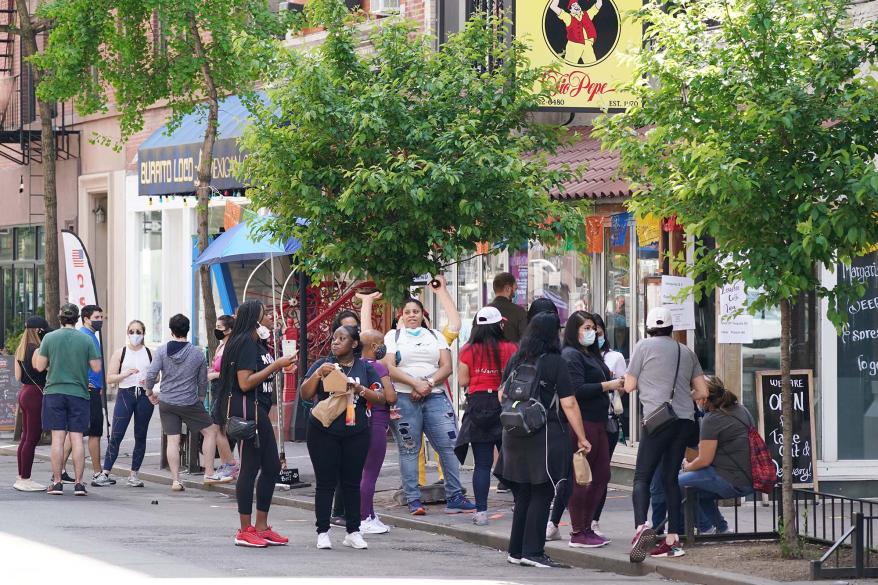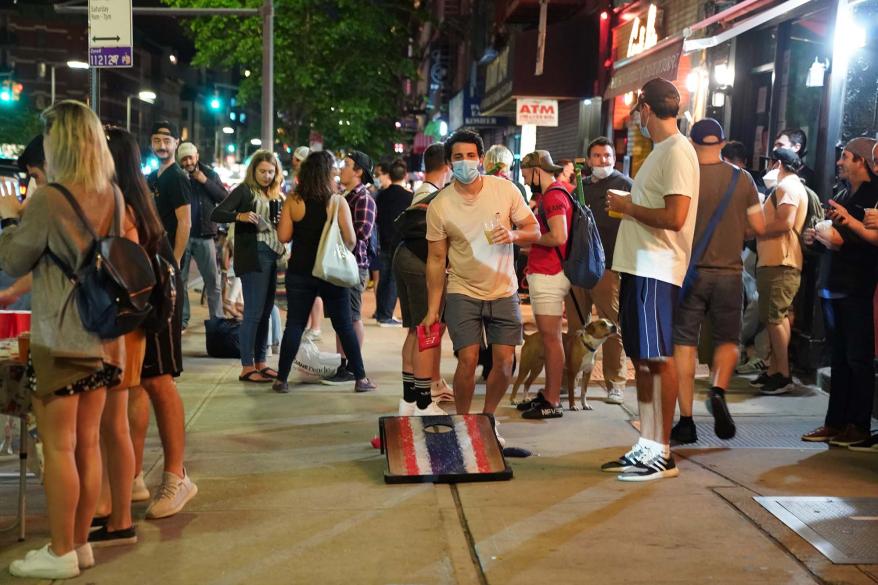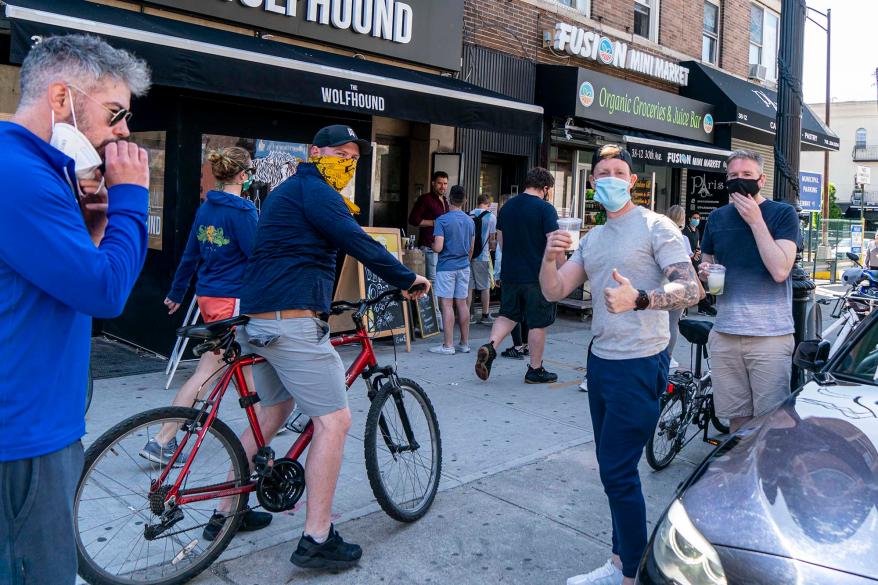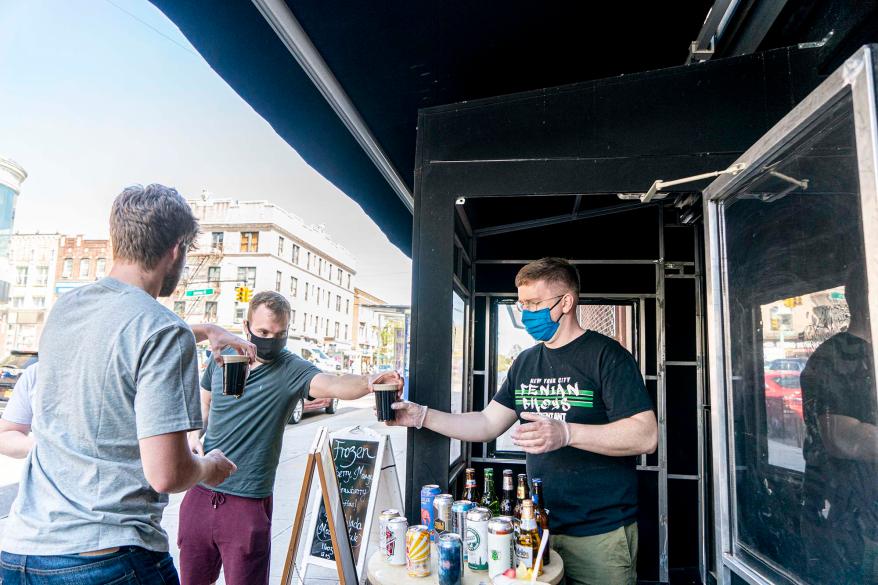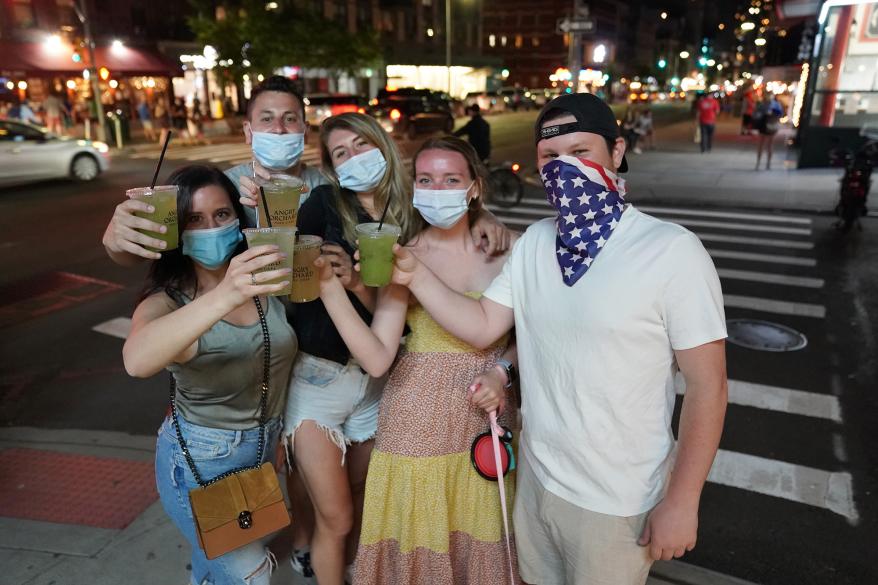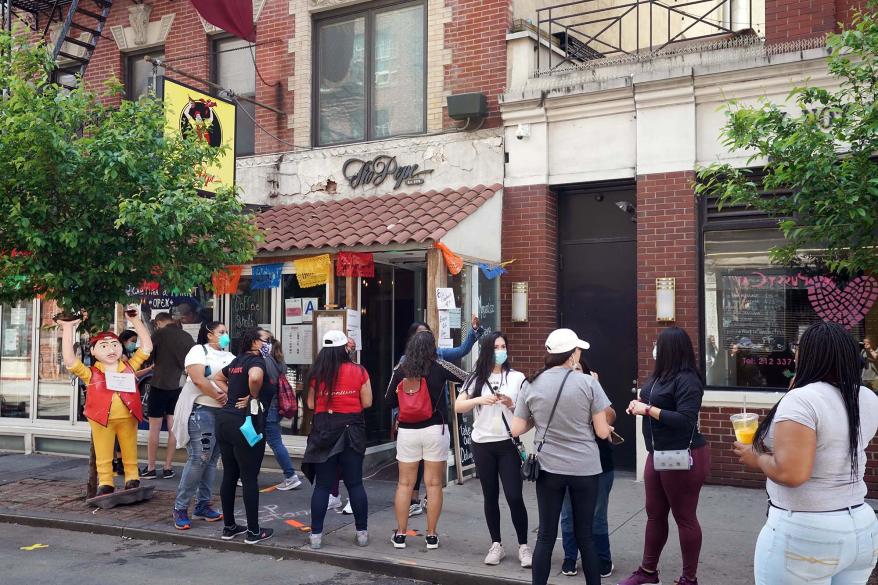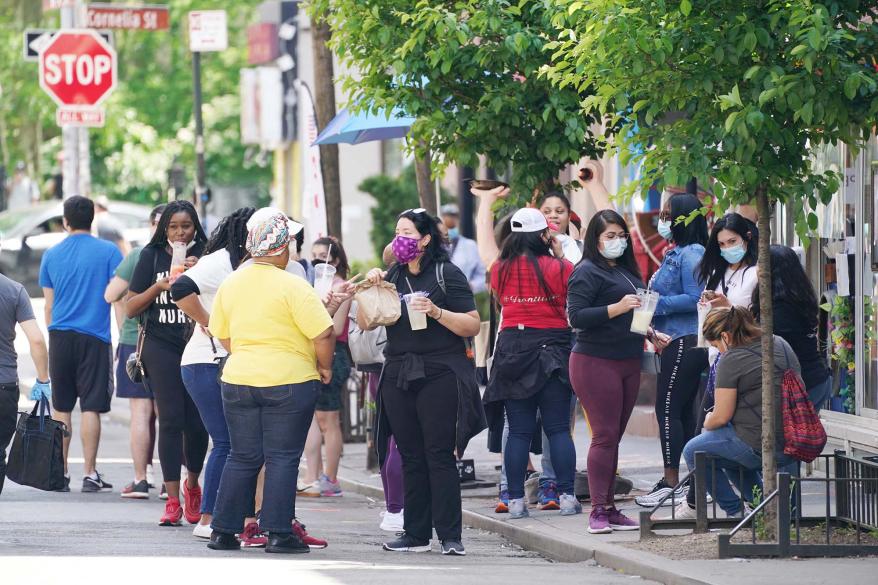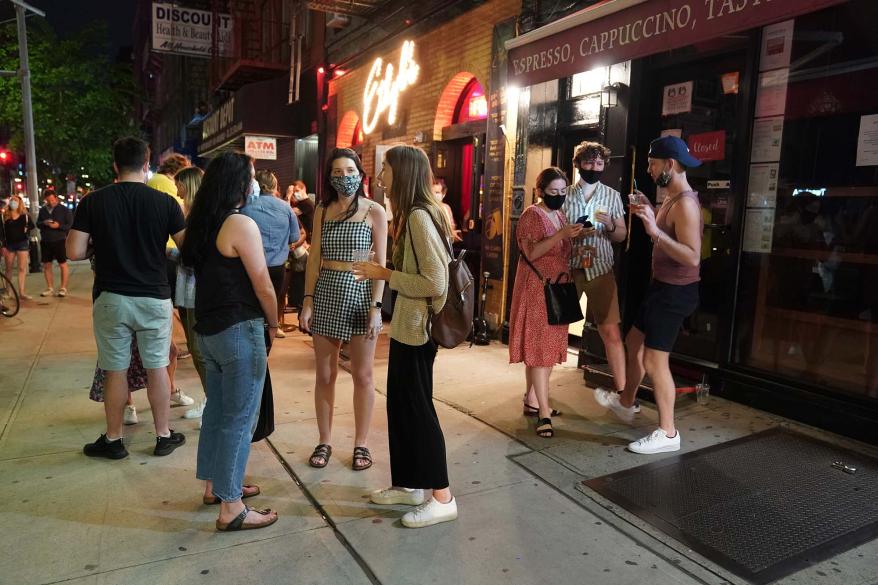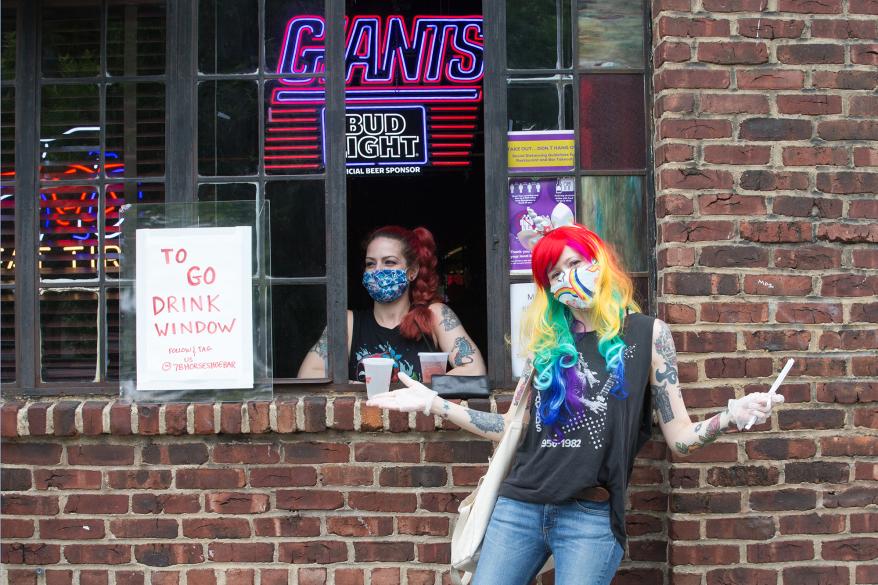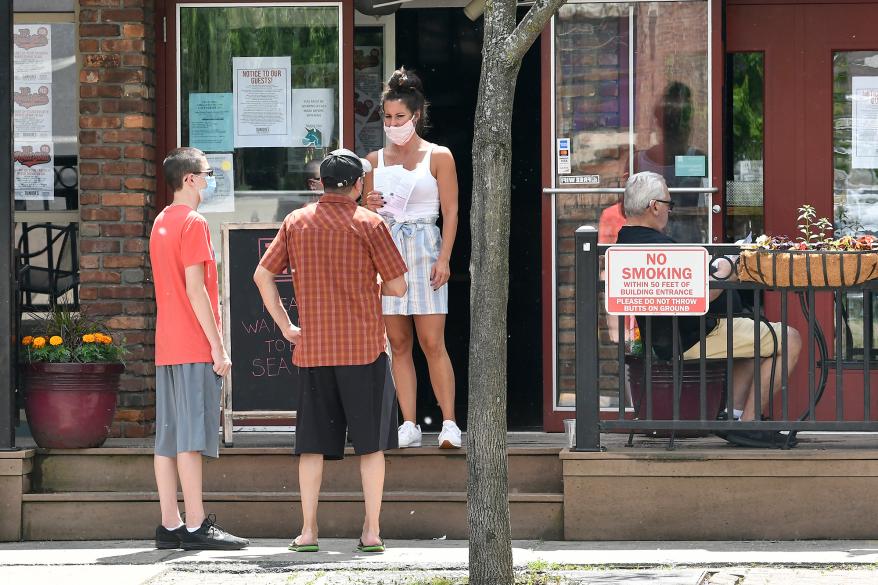Working at a beer store on St. Mark’s Place, Brittany Spano, 27, has seen the Big Apple’s robust social life return, albeit in an abridged form.
Drink windows selling to-go cocktails and beers have sprung up throughout the city, drawing in socially starved New Yorkers who have been in quarantine for three months. But this re-emergence has come with a stream of issues — mainly a steady flow of revelers freely peeing in public since most bathrooms remain closed. And now, with thousands of protesters taking to the streets each day, more people than ever are contributing to NYC’s No. 1 problem by whizzing in the wild.
“Last night, my co-worker saw some guy just coming down the street and pulling down his pants [to urinate],” Spano tells The Post. “She was like, ‘Nah, not here, man.’
“There’s definitely been an uptick on this street, from what I’ve seen. But most people at least go in a corner or have friends cover them up,” says Spano.
A lack of restrooms has left New Yorkers in a bind. They want to go out but then they are left holding it in. Restaurants, bars and coffee shops where New Yorkers could always find relief in the past have closed their restrooms to the public. Plus, with fears over the coronavirus still very present, many don’t feel safe going into germ-infested public restrooms. And hey, peeing in public isn’t even a crime anymore. In 2017, New York City introduced the Criminal Justice Reform Act, which decriminalized low-level offenses.
“My friends and I talk about [public urination] all of the time now,” Sophia, a 23-year-old who lives in Park Slope and asked that her last name not be used, tells The Post. “It’s a big topic. Since the pandemic, I have done it myself in Prospect Park, behind a dumpster in Williamsburg and Greenpoint. All of the public restrooms like McDonald’s and Starbucks are closed. If you are far away from your home, what are you supposed to do?”
The Brooklynite, who is recently unemployed, never leaves the house without tissues.
“Sometimes when I am out for a bike ride, I won’t drink water because I know that I will have to go to the bathroom and there are no options. If I am going to meet a friend, I have to think about my liquid intake.”
The lack of bathrooms has come front and center during the recent Black Lives Matter protests that have swept the city. Twitter account @OpenYourLobby urged museums and theaters to make their bathrooms available, creating a spreadsheet of available toilets.
It was a handy reference for Eric Silver, a 40-year-old protester, and his wife, who found themselves in a bind after marching from Grand Army Plaza to City Hall and back to Brooklyn.
“We had been drinking a lot of water,” Silver, a software consultant, tells The Post. “We were about a mile from home, and we were getting a little worried. My friend knew about the spreadsheets, and we found BRIC [a media center on Fulton Street]. We hobbled over, and it was like an oasis.”
Spano says her shop’s “no bathroom” edict hasn’t stopped people from begging to use their facilities.
“People ask to use our bathroom all of the time, but we have to say no. One guy went on for 10 minutes about his weak bladder. If you have a problem, then you should probably stay in the radius of your home,” says Spano, who lives in Williamsburg.
In nearby Tompkins Square Park, the restrooms have extended their hours to 7 p.m., but many drink windows are open until 9 p.m.
A bartender who works across from the park says people frequently ask to use the facilities, but the answer is always no. (According to the Health Department, restaurants that offer outdoor dining during Phase Two of reopening, which could occur as early as June 22, “may offer restroom access to customers, provided that social distancing is promoted within and while waiting for restrooms.”)
One East Village bar owner, who asked to withhold his name, said he saw a handful of people peeing in the park two Sundays ago.
“I got to the park after 7 p.m. and people said the bathrooms were closed. People go out and bounce around and after four drinks, you need to go,” says the bar owner. “We can’t let people go into our bathrooms. They’re closed. This will be a problem going forward.”
Diem Boyd, who heads up the community group LES Dwellers, says while they haven’t specifically fielded complaints of public urination, “There are a lot of people drinking on the street. We suspect that there are a lot of quality-of-life issues bubbling up.”
Spano says she has recently seen a big flood of infractions, even from her fire escape in Williamsburg.
“I live right near the Williamsburg Bridge and there’s a little corner that everyone seems to find perfect for peeing in public. I sit outside on my fire escape and watch it happen all the time.”
With temperatures on the rise, expect the city’s oppressive summer stink to be even worse this year.
“Public urination was already an issue in New York. If this continues into the summer, the smell is going to get pretty bad,” Spano says. “There has to be something that can be done about it.”










